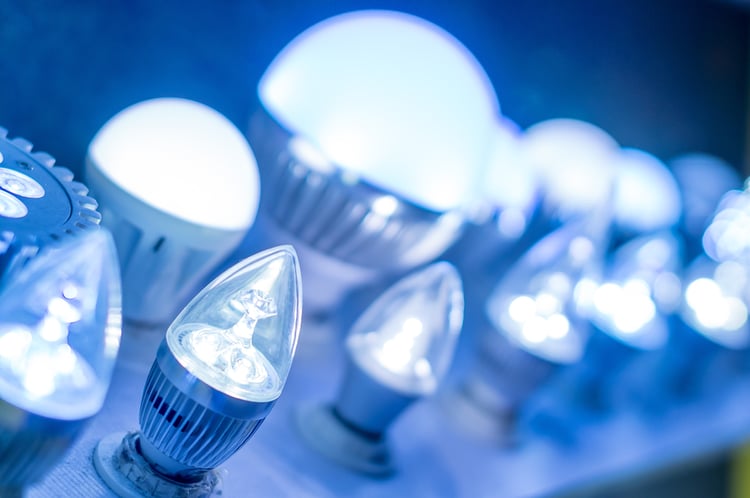3 Effective Ways to Save on Power Bills During Summer

Building owners must deal with power and gas bills all year long, but the energy consumption profile changes depending on the season. Gas consumption tends to reach its highest point during winter, since buildings need a large heat input for both water and indoor spaces. On the other hand, electricity consumption tends to peak on the hottest summer days, since air conditioning systems are being used at full capacity.
Electricity prices tend to increase over time, and buildings may face progressively higher cooling costs each summer even if their consumption has not increased. However, this also means that the savings opportunity grows each year.
Get a professional energy audit and reduce your building's power and gas bills.
Here we will discuss three effective measures that can help building owners avoid sky-high power bills during summer. By upgrading to newer air conditioning systems, building owners can achieve the same cooling effect with a lower energy input. LED lighting achieves direct savings and a quick payback, and the cooling load is reduced slightly thanks to its low heat emission. Finally, solar power systems can generate electricity for over 25 years, but they reach peak productivity during the sunniest months.
1)Air Conditioning System Upgrades and Recommissioning

There are many types of air conditioning systems, and the ideal option varies depending on the cooling needs of each property. Some buildings have unitary air conditioners for different areas, and their operation and power consumption are completely independent. Other properties have a central chiller plant, from which cold water is distributed to fan coils in all building areas.
- An equipment upgrade can greatly reduce energy costs, regardless of the AC system configuration.
- The complexity and cost of replacing AC equipment depends on the type of unit, but a professional engineering firm can optimize your costs regardless of system size.
Depending on the HVAC design, there may be other types of equipment you can upgrade beyond the cooling units strictly speaking. For example, chiller plants use pumping systems to distribute cold water, and you can upgrade them with NEMA Premium Efficiency motors and variable frequency drives for speed control. The same measure can be applied for air handling units and cooling towers, which are also driven by electric motors.
An air conditioning system can also improve its performance with a professional inspection and recommissioning service, even if no equipment is replaced. Energy consumption can often be reduced by fixing configuration errors and conducting minor repairs. These may include excessively low temperature settings, variable-speed fans that always run at maximum rpm, worn out belts on motor-drive equipment, etc.
2) Upgrading to LED Lighting

Building owners are now aware of the energy-saving potential of LED lighting, but the technology actually offers three types of savings. Since LEDs last much longer than older lamp types, they also save many replacements during their service life. One LED bulb is more expensive than one incandescent bulb, but it lasts 15-25 times longer. For an accurate estimate of the savings achieved, you need to consider both the electricity savings and the avoided lamp purchases.
LED lighting achieves additional savings when used in air conditioned spaces. All lighting systems emit heat, but LEDs have a much lower emissions than incandescent, fluorescent and HID lamps. When your lighting system is upgraded, the reduced heat emission is also subtracted from your cooling load. As a quick example, assume that a group of commercial buildings upgrades all lighting systems to LED, and indoor heat emission is reduced by 100 kW.
- 100 kW are equivalent to more than 341,000 BTU/hour, and this is subtracted directly from the air conditioning workload.
- Assuming an energy efficiency ratio of 12, the air conditioning systems remove 12,000 BTU/hour for every kilowatt consumed.
- In this case, the cooling load reduction of 341,000 BTU/hour reduces power consumption by more than 28 kW.
Keep in mind this is a very simplified example: to analyze the interaction between your lighting and air conditioning systems accurately, you need energy modeling software.
3) Installing a Commercial Solar PV System

Solar panels generate electricity all year long, and they have a service life of over 25 years if you purchase quality brands. Buildings are exposed to the highest sunshine rates during summer, and this heat gain increases the workload on air conditioners. However, you can also use this to your advantage by installing a commercial solar system. Photovoltaic panels can convert solar radiation reaching your property into electricity, which offers a dual benefit: the heating effect is reduced, and the kilowatt-hours generated are subtracted from your bills.
Solar power systems in the US qualify for a 26% federal tax credit, regardless of their size and location, and this benefit remains available until the end of 2022. Just keep in mind that the tax credit drops to 22% in 2023, and from 2024 onward there will only be a 10% tax credit for businesses and 0% tax credit for homeowners.
Early in 2021, the accumulated solar capacity installed in the US surpassed 100 GW, and there were more than 121 GW by the end of the year. The country could have around 464 GW of solar power by 2032, or even 700 GW in an optimistic growth scenario. Fossil fuels still dominate the US electricity market, but solar power is now the fastest growing electricity source.

Michael Tobias
Michael Tobias, the Founding Principal of NY Engineers, currently leads a team of 150+ MEP/FP engineers and has led over 4,000 projects in the US
Join 15,000+ Fellow Architects and Contractors
Get expert engineering tips straight to your inbox. Subscribe to the NY Engineers Blog below.

